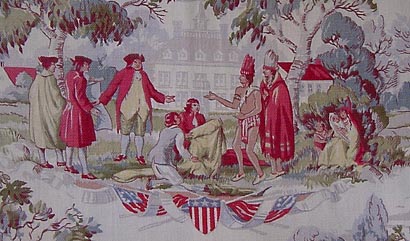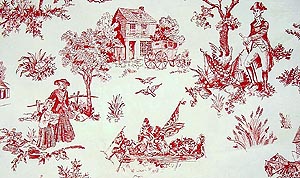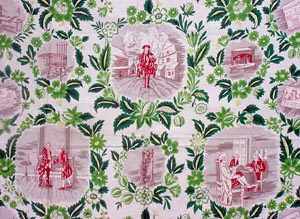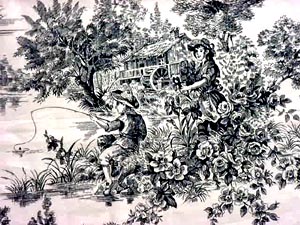| Toiles -- printed
fabrics of
historical or pastoral scenes -- are once again popular in home
decorating,
just as they have been, on and off, for two hundred and fifty years.
First produced in
Ireland in the
1750's, they spread quickly to England and then to France, where they
became
known as toiles de Jouy. (Toile is French for cloth and Jouy was the
factory
in Versailles where they were manufactured, becoming the favorite
fabric
of Marie Antoinette.)
After the American
Revolution,
the British exported toiles (which they called copperplate prints) to
their
former colonies with images such as George Washington riding a chariot
and Ben Franklin in a fur hat.
By the 19th century,
roller printing
replaced copperplate printing and Americans began producing their own
toiles,
based mainly on eighteenth century European designs. Present-day
toiles also follow classic patterns.
But in the twentieth
century,
designers were inspired by a unique American vision, creating fabrics
that
retold our history and our simple pleasures (or at least our yearning
for
them). This exhibit looks at American toiles -- both historical
and
pastoral -- created from the 1930's to the 1970's.
|



